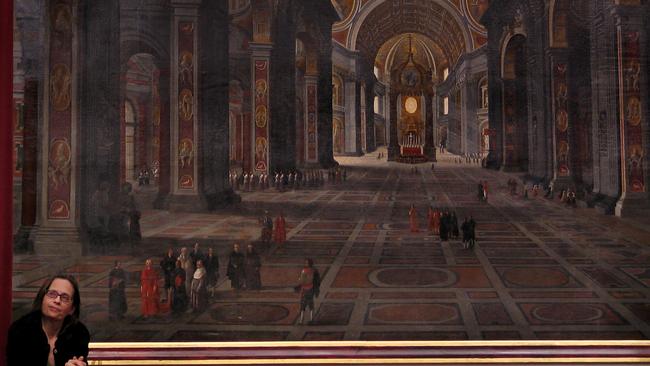From little things …
The reputation of short fiction writer Lydia Davis has quickly changed

How swiftly a reputation can change. Before Lydia Davis’s short fiction was gathered in a single volume by America’s Farrar, Straus and Giroux imprint in 2009, she was admired in a cultish, writers’ writer sort of way. Her austere tales, stylistically inventive and often confessional in tone, could be up to seven, eight or nine pages long. Most of them were far shorter. One consists of a single sentence, including the title: “Samuel Johnson is Indignant: that Scotland has so few trees.”
To see all these wilfully constricted and deliberately fragmentary micro-fictions in one place was both clarifying with regard to Davis’s method and thrilling in terms of total effect. As James Wood wrote in the pages of The New Yorker in 2010, reviewing the Collected Stories: “Finally, one can read a large portion of Davis’s work, spanning three decades and more than 700 pages, and a grand cumulative achievement comes into view — a body of work probably unique in American writing, in its combination of lucidity, aphoristic brevity, formal originality, sly comedy, metaphysical bleakness, philosophical pressure, and human wisdom.”
Since then, Davis’s stature has only grown. She won the Mann Booker International Prize in 2013 and has become increasingly admired for the other half of her career, namely her decades-long work as a translator. Beginning with philosophical texts or literary essays by Frenchmen Maurice Blanchot and Michel Leiris, Davis has, in more recent times, applied herself to fictions by canonical figures — most notably Gustave Flaubert’s Madame Bovary and Marcel Proust’s Swann’s Way.
Translation is not explicitly addressed in this volume of non-fiction, which draws together essays, reviews and introductions from the 1980s to the near-present that outline her literary and artistic enthusiasms — those pieces are slated for a second, forthcoming volume — though what becomes clear in these pages is that translation is, for Davis, both an activity and an aesthetic.
Note the quotation she includes in one piece from a long essay by Clare Cavanagh, a revered translator of Polish poetry, called The Art of Losing: “Of course translating poetry is impossible: all the best things are. But the impulse that drives one to try is not so far removed, I think, from the force that sends the lyric poet out, time after time, to master the world in a few lines of verse.”
Davis acknowledges this impulse in her own creative work. Translation she is drawn to because the beauty, strangeness or complexity of a text almost demands that she wrestle it into English. The challenge is formal, rigorous, shaped by questions of linguistic difference, style and meaning. Yet the appreciation that inspires the undertaking comes from something closer to desire — that longing to possess a beloved text by becoming the locus of its transmission into a new tongue.
For all the cool intellectualism and asperity of tone that characterises Davis’s fictions — all the minor domestic tristesse narrated by her scores of wounded narrators, mothers or sons, wives or husbands, characters barely named or unnamed, autobiographically proximate to the author or borrowed from elsewhere — this impulse is a saving one. It allows wit, feeling and a very human honesty to emanate from her fictions. All of them, even the most lapidary, experimental in form or dire in apprehension, emerge from and are buoyed by this primary sense of wonder — that magnetic pull to transcribe the world and self, employing language and the imagination.
Of course (to repurpose Cavanagh’s quote), the translation of life into literature is impossible too. Grammar itself imposes false order on the flux of consciousness. Narrative inevitably favours some perspectives over others. Describing reality with words is like using a sieve to capture sunlight. So much plenitude wasted, so much falsification in the quest for truth.
Flaubert described the pain of this situation wonderfully. Language, he wrote in Madame Bovary, “is like a cracked kettle on which we beat our tunes for bears to dance to, when we long to move the stars to pity”. It is a mot Lydia Davis doubtless knows well, since the translation is hers. But it could be used as the epigraph to the essays, so consistently and thoughtfully do they return to the question of how, as writers (and readers), we might fail a little better.
And here lies the main surprise of the essays. Those who come to them through a love of late modernist experiment will find everything they want, and more. What everyone else gets is a masterclass on the writing process — a clear, rigorous and self-critical primer on how language can be shaped, arranged and polished so as to more faithfully reflect the writer’s intentions.
Davis often does so through a process of readerly genealogy. She explains how as a talented beginner she was wedded to traditional methods and stylistic templates. Her stories were lengthy, at first — they owed as much to Hemingway and Updike as to any more radical tradition.
Many pieces here describe the gradual establishment of an independent authorial voice. In the splendidly titled A Beloved Duck Gets Cooked: Forms and Influences I, Davis recalls being stuck in the sterility and inertia of writing in an inherited tradition (it helps to know here that her father was a literary scholar and her mother a short story writer of note: her sense of literary inheritance is further tangled in the knot of familial relations).
Then she came across the work of an American writer named Russell Edson — his short, weird book The Very Thing that Happens. Edson called his brief fantastical tales “poems” or “fables”, even though they were written in prose and dealt with banal elements of contemporary life. They could be sunny or lyrical, dealt with inanimate objects as often as human beings, and were over almost before they began.
“Some of the stories I found brilliant,” writes Davis, “but others faltered. Yet the stories that did not quite succeed showed me two things that were helpful to a young writer: they showed me more clearly how the stories were put together; and they showed how a writer could try something, fail, try again, partially succeed, and try again.
“A third thing the stories showed me how you could tap some very difficult emotions and let them burst out in an unexpected, raw, sometimes absurd form — that perhaps, in fact, setting oneself absurd or impossible subjects made it easier for difficult emotions to come forth.”
So it was that Lydia Davis began writing one-paragraph stories, one or more a day.
Yet the honour roll of illustrious literary inspirations in the essays runs much longer than Edson. Davis writes with economical appreciation for the usual subjects: Kafka, Beckett, Hemingway — those brilliant Russians Isaac Babel and Vladimir Nabokov also get a nod. More interesting still are those who were equally important in the author’s development but perhaps less well known.
Among these are the wild Austrian novelist Thomas Bernhard, who took time out from his breathless book-length harangues to write The Voice Imitator, a mini-anthology of his obsessions constructed from 104 micro-fictions. Or the Swiss writer Robert Walser, whose early stories Kafka enjoyed and who spent his later years in an asylum for the Insane, his handwriting having shrunk to microscopic proportions.
But she writes with equal grace, generosity and insight about contemporaries who deserve praise beyond their effect on her own writing. Of Lucia Berlin, a writer rediscovered by the rest of us only in recent years, she begins: “Lucia Berlin’s stories are electric; they buzz and crackle as the live wires touch. And in response, the reader’s mind, too, beguiled, enraptured, comes alive, all synapses firing. This is the way we like to be when we’re reading — using our brains, feeling our hearts beat.”
And not just individual authors: she investigates entire literary forms in the essays — often in ways that turn our expectations upside down. Keeping a notebook open alongside her more finished manuscripts, Davis argues for the equal merit of the stray materials she puts down there.
Maybe the notebook “is a place to practice not only writing but also thinking. After all, when you revise a sentence you are revising not only the words of the sentence but also the thought in the sentence. And more generally, by getting a certain description exactly right, I am sharpening the acuteness of my observation as well as my ability to handle the language.”
Just as the volume takes marginal, eccentric or overlooked literary voices and, by dint of close consideration, renders them fresh and approachable, no longer foreign to the reader’s ear and eye, so too do broader essays such as this one (a companion piece on the literary fragment is equally good) make marginal literary forms seem like elegant, commonsense responses to the problem of keeping literary language abreast of the world as we find it: a here and now full of beauty and sadness demanding continual re-translation — the cracked kettle, as ever, is ours to repair.
Geordie Williamson is chief literary critic of The Australian.
Essays ONE




To join the conversation, please log in. Don't have an account? Register
Join the conversation, you are commenting as Logout